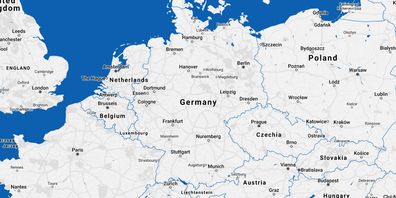
Civil and Environmental Engineering, Department
Fakultät 2: Bau- und Umweltingenieurwissenschaften
Universität Stuttgart
Pfaffenwaldring 7
D-70569 Stuttgart
Telephone: +49 711 685-66234
https://www.uni-stuttgart.de
Uni Stuttgart
Department on the internet
Degree courses with details
- Civil Engineering (B.Sc.)
- Property Engineering and Property Management Studies (B.Sc.)
- Traffic Engineering (B.Sc.)
- Civil Engineering (M.Sc.)
- Infrastructure Planning (M.Sc.)
- Property Engineering and Property Management Studies (M.Sc.)
- Computational Mechanics of Materials and Structures (M.Sc.)
- Traffic Engineering (M.Sc.)
- Pollution Control Engineering (B.Sc.)
- Pollution Control Engineering (M.Sc.)
- Water Resources Engineering and Management (M.Sc.)

Map material from the free geographic information system OpenStreetMap. The DAAD explicitly does not adopt the information provided there (names, boundaries, etc.) in every case. No guarantee is given for the accuracy of this information.
Legend:
- Department
Basic information
- Teaching staff at the department
115
- Percentage of teaching by practitioners
8.0%
- Percentage of teaching by practitioners, master's
15.0%
Teaching in core subjects
- Basics (e.g., maths): 16.5%
- Construction Engineering: 11.5%
- Water Management: 33.8%
- Ressource Management: 6.9%
- Transport Systems, Urban and Regional planning: 15.6%
- Construction Management: 6.1%
- Other fields: 9.5%
Support during the study entry phase
- Total score for support in the study entry phase
12/14 points
Job market- and career-orientation
- Bachelor theses in cooperation with work environment
no data
- Master theses in cooperation with work environment
no data
- Share of professors with work experience
7.4%
- Professors with own engineering company
11.1%
Research
- Third party funds per academic
63,700 €
- Doctorates per professor
1.5
Further information provided by the department
Special features regarding teaching
Special features regarding the international orientation
Special features regarding the equipment
Special features regarding research activities
Other special features
Further information on research activities
Further information about study entry phase
Information on access restrictions
Website of the Student Council
online-application
Civil Engineering
Facts
- Total number of students at the department
1,270
- Number of master degree students (w/o teacher qualification)
560
Students' assessments on consecutive master's degree courses
- Teacher support
- Support in studies
- Digital teaching elements
- Courses offered
- Study organisation
- Transition to Master's studies
- Research orientation
- Overall study situation
- Return rate of the questionnaires
56
Environmental Civil Engineering
Facts
- Total number of students at the department
440
- Number of master degree students (w/o teacher qualification)
260
Students' assessments on consecutive master's degree courses
- Teacher support
- Support in studies
- Digital teaching elements
- Courses offered
- Study organisation
- Transition to Master's studies
- Research orientation
- Overall study situation
- Return rate of the questionnaires
27
Legend
Groups
green
yellow
red
Acronyms
(S) = Students' judgements
(F) = Facts
(P) = Professors' judgements
CE = Civil Engineering
EnvCE = Environmental Civil Engineering
Units
Value in percent
Value in points
Euro
Thousand Euro